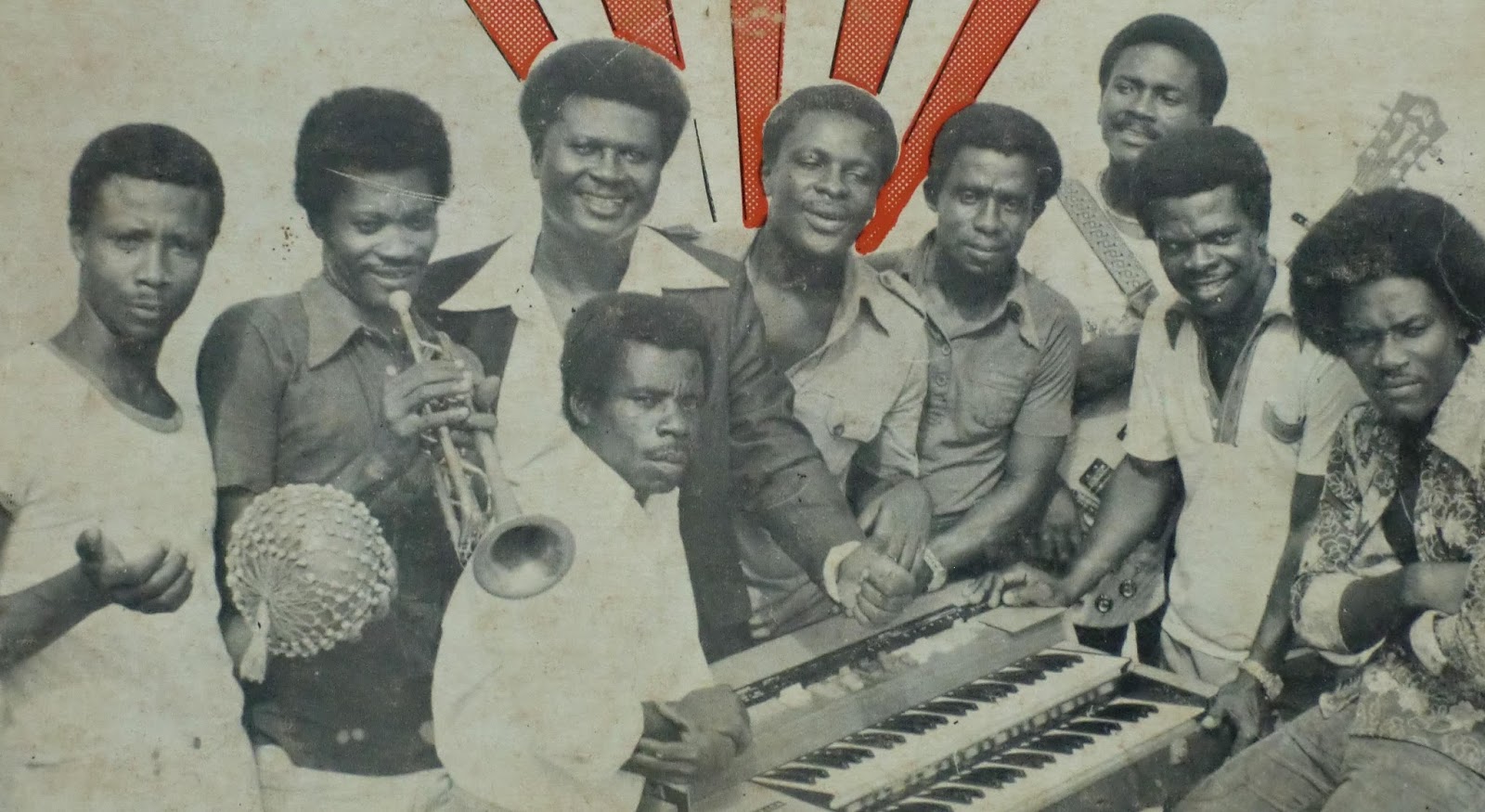Palm wine music is a retrospective term for various early twentieth-century music styles that combined local West African instruments with the portable ones of visiting seamen: the concertina, harmonica and particularly the guitar. It was played in working-class dockside bars and palm wine bars and included sub-genres such as the osibisaaba and annkadaamu of the local Fanti fishermen, Sierra Leonian asiko music and the dagomba, “fireman” (i.e. ship coal-stoker) and “mainline” guitar-styles of visiting Liberian Kru sailors and stevedores.
Kru seamen had been working aboard European sailing ships from Napoleonic times and developed the distinctive West African two-finger plucking guitar technique, which spread along the West African coast from World War I on via Kru-town settlements. It was a Kru who, in the 1920s, taught Ghana’s famous pioneer highlife guitarist Kwame Asare (or Jacob Sam), whose Kumasi Trio made the first highlife recordings (including the famous “Yaa Amponsah”) for Zonophone in London in 1928 (re-released on CD by Heritage, UK).
When coastal palm wine music moved inland, it incorporated features of the traditional Akan seprewa harplute, creating the more rootsy odonson or Akan “blues” style of palm wine music. During the 1930s and 40s guitar (and concertina) records of these Akan “blues” were being distributed in southern Ghana by HMV and Parlophone, featuring artists like Jacob Sam, Kwesi Pepera, Appianing, Kwame, Mireku, Osei Bonsu, Kwesi Menu, Kamkan and Appiah Adjekum. These groups were all small, consisting of no more than a guitarist or two plus a percussionist, although Appiah Adjekumalso used an array of konkoma frame drums, with his Liberian wife accompanying him on slide guitar.
After World War II the palm wine groups expanded into guitar bands by borrowing instruments, such as standing double-bass, clarinets and Afro-Cuban bongos, from the highlife dance bands of the period, such as E.T. Mensah’s Tempos. The most important of these post-war guitar bands was that of E.K. Nyame (with his falsetto singer Kobina Okai) who had trained with Appiah Adjekum.
Other leading guitar bands of the 1950s were those of I.E. Mason, Kwaa Mensah, Kakaiku, Onyina, Yamoah and Ampoumah (T.O. Jazz). The 1950s bands were acoustic, but during the 1960s they went electric. However, since the late 1960s a number of bands and artists have gone back to the older, “unplugged” format. One is the Ashanti guitarist Koo Nimo, who began to revive the old palm wine style, using acoustic “box” guitar and traditional percussion instruments. He also sometimes teams up with the seprewa player Osei Kwame Korankye. Some of the guitar-band old-timers have also moved back from amplified to acoustic guitar. For instance during the 1970s and 80s the late Kwaa Mensah performed and recorded some acoustic highlifes. Then there is Kwabena Nyama from Kumasi, who since 2000 has released several albums and toured Europe. Another is the late T. O. “Jazz” Ampoumah who, together with his singer Kojo Menu, worked and recorded with the Ghana University-based Local Dimension band.
A few musicians of a younger generation also play in the palm wine mode, such as the Kwahu guitarist and singer Kwadwo Tawia (see the Highlife Allstars CD, p.134) and the group of guitarist Papa Baah and seprewa player Kyerematen Baffour.
Header image: OMGVoice


